
06.10.2022
In relation to the reopening of the parallel project by Galería Hilario Galguera, El cuarto de máquinas, Ana Gabriela García walks through the exhibition Negra espalda del tiempo and observes how artists Vanessa Enríquez and Concepción Huerta evoke processes of memory and fiction: representations of the unrepresentable.
A satellite platform of the Galería Hilario Galguera, El cuarto de máquinas emerged in 2010 as an initiative of the gallery to dialogue with experimental and independent projects, with an emphasis on site-specific works. Although the project began in Berlin, its move to Mexico City undoubtedly positioned the space as one of the platforms whose artistic proposals introduced, to the local scene, a possibility to expand the dialogues between artistic practice, curatorship and research. Thus, El cuarto de máquinas satisfies that itch that makes us want to learn more about what happens behind the scenes in the artistic processes and exhibition dynamics that, as a laboratory, also enables discussions about the other circuits of the young art scene not only through the linking of local but also international cultural agents. With this effervescent spirit, El cuarto de máquinas returns to its physical format in downtown Mexico City. I like to think, in this sense, that the project resumes with a strong desire to connect with the historical past of the precinct, which also served as a meeting point for artists, managers and writers, but also recognizes the urban-political layers that are inscribed in the building. It is said that a machine room is that place whose four walls are destined to contain everything that allows things to function. Regarding the spaces occupied by time and the ways in which one can situate oneself in them, the first project with which he resumes his activities is articulated like a puzzle piece.
On our backs we carry an intrigue about oblivion as a condition of possibility for remembrance; about whether memory is its poison or, on the contrary, a countervenom. Time slips through our hands, in them everything travels towards its own disappearance, but in them we also distill ourselves. How do we situate ourselves before the voids of memory? Negra espalda del tiempo [Black back of time] is part of this fugue. Curated by Gabriela Mosqueda, this exhibition puts in dialogue the work of Mexican visual artists Vanessa Enríquez and Concepción Huerta.
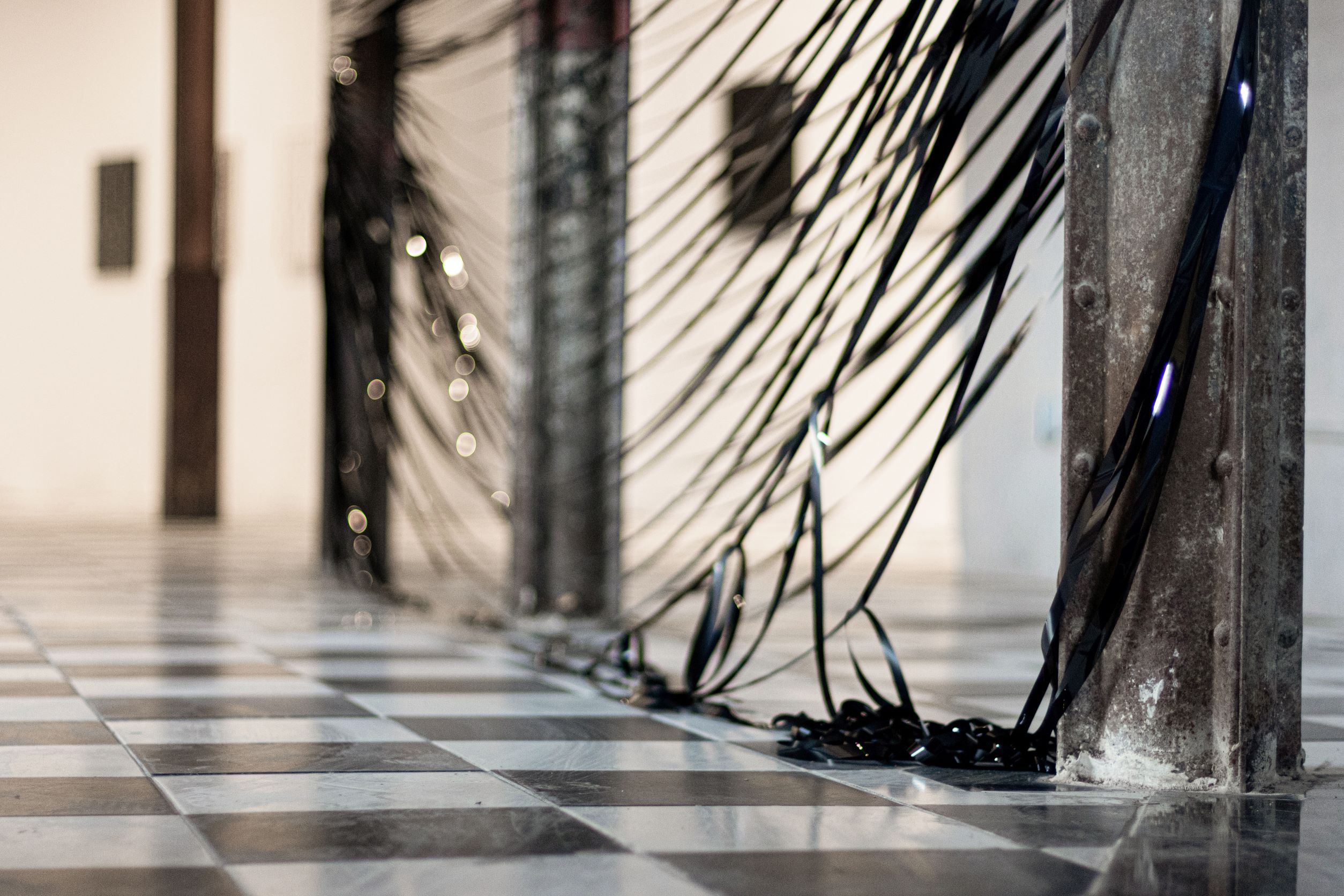
I walk across a floor of earthenware: one white, one black, one white and one black, like a chessboard. I look up at the wall, and there I see how the bichromatic rhythm continues, now in a different way. Vanessa’s drawings unfold on the walls. Their different formats and compositions keep a common gesture: a black matter that vanishes -or resists to appear? It is a filmic tape whose imprint on an adhesive surface leaves the record of the magnetic material on paper in an irregular manner. Its constant unauthorized transfer on the surface speaks to us of the potential of accumulation, of that which is archived, that which is documented, and which in turn makes us.
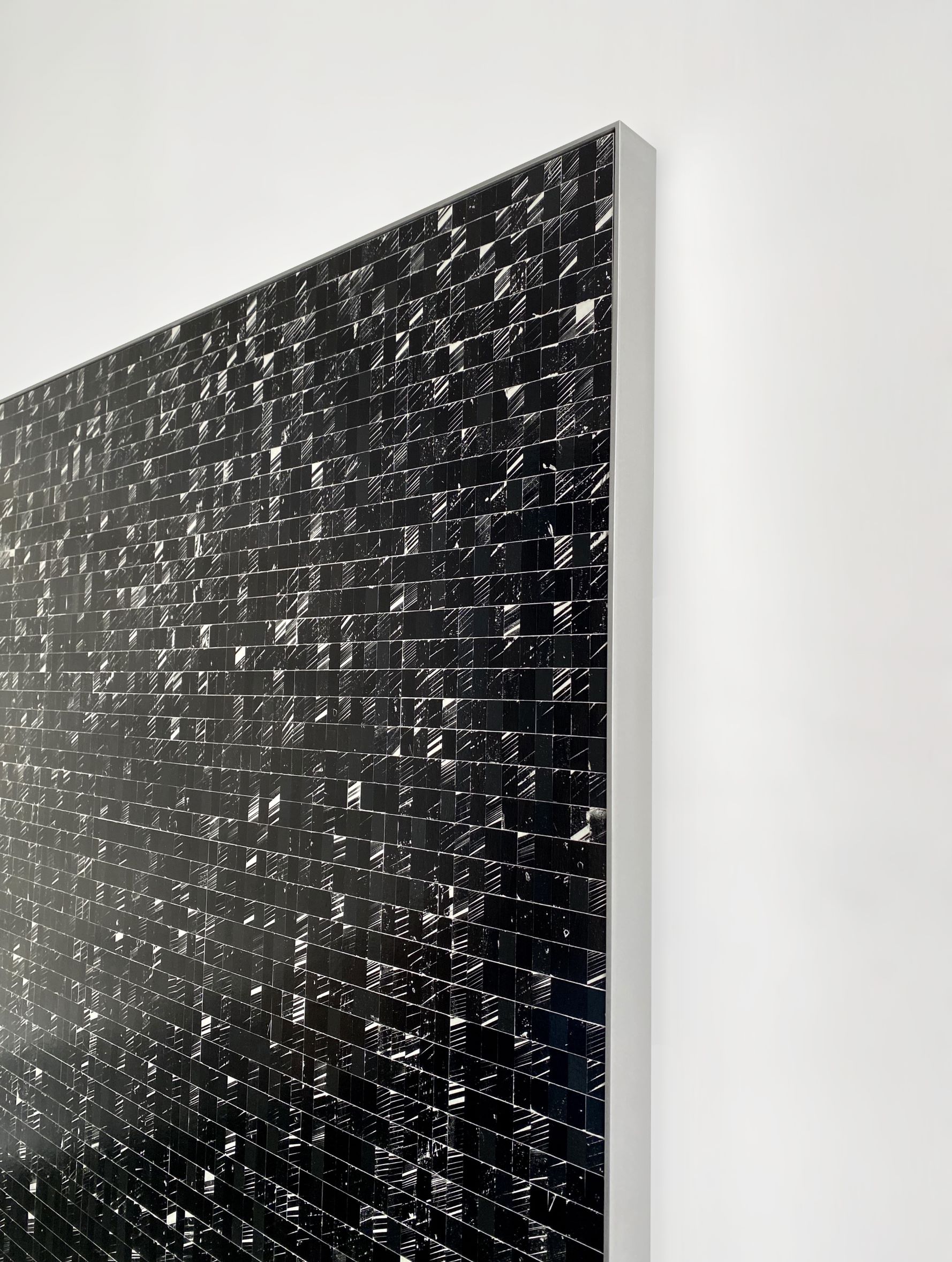
In the center, in the exposed structure, the drawings overflow from the plan. Vanessa’s site-specific installation is a spatial drawing traced with filmic tape on the central columns of the room. The black weft becomes a dark matter that squeezes the pillars and then releases them. Like a blurring trace, the expanded drawing evokes the disused matter and its accumulation.
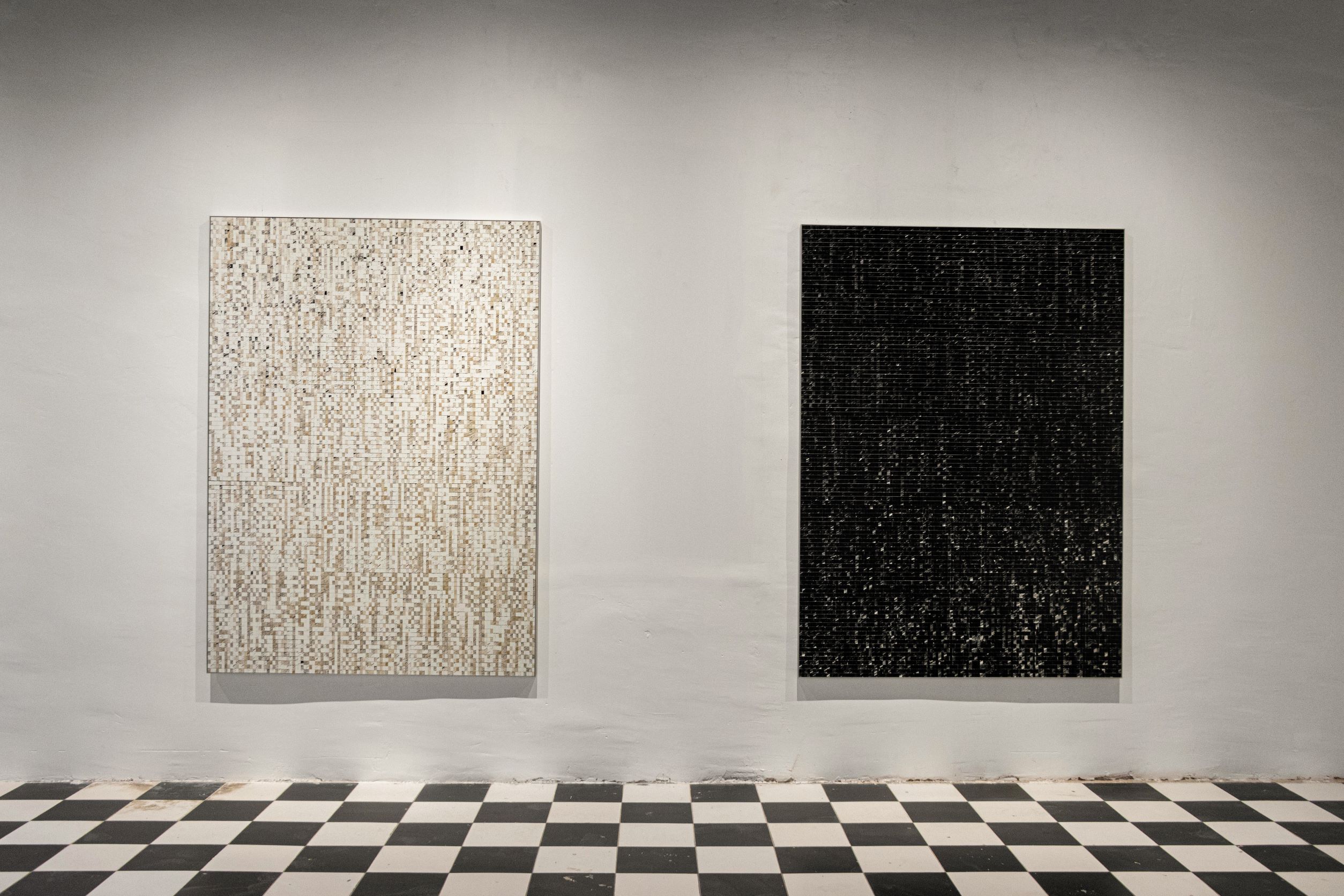
It is inevitable to ignore the contradiction hidden in these records: the obsolescence of the material veils the content, but this does not mean that it is not there. The tapes that safeguard a past moment -from a Hollywood film to a home movie- are no longer reproduced as image-movement on the screen. Almost like a new code, that encrypted content is segmented to be rewritten on paper and, as micro-narratives -small random fragments of disputed archive-, they weave pictures made from memory. In its repetition, the accident gradually empties the content in order to inscribe on the surface another language and, hand in hand, makes a meditative state appear that allows us to grasp, for an instant, the flows of content and information that matter keeps. In other words, what is archived and how it is archived -and what brings us together and at the same time separates us- is neither unilateral nor is it all said and done.
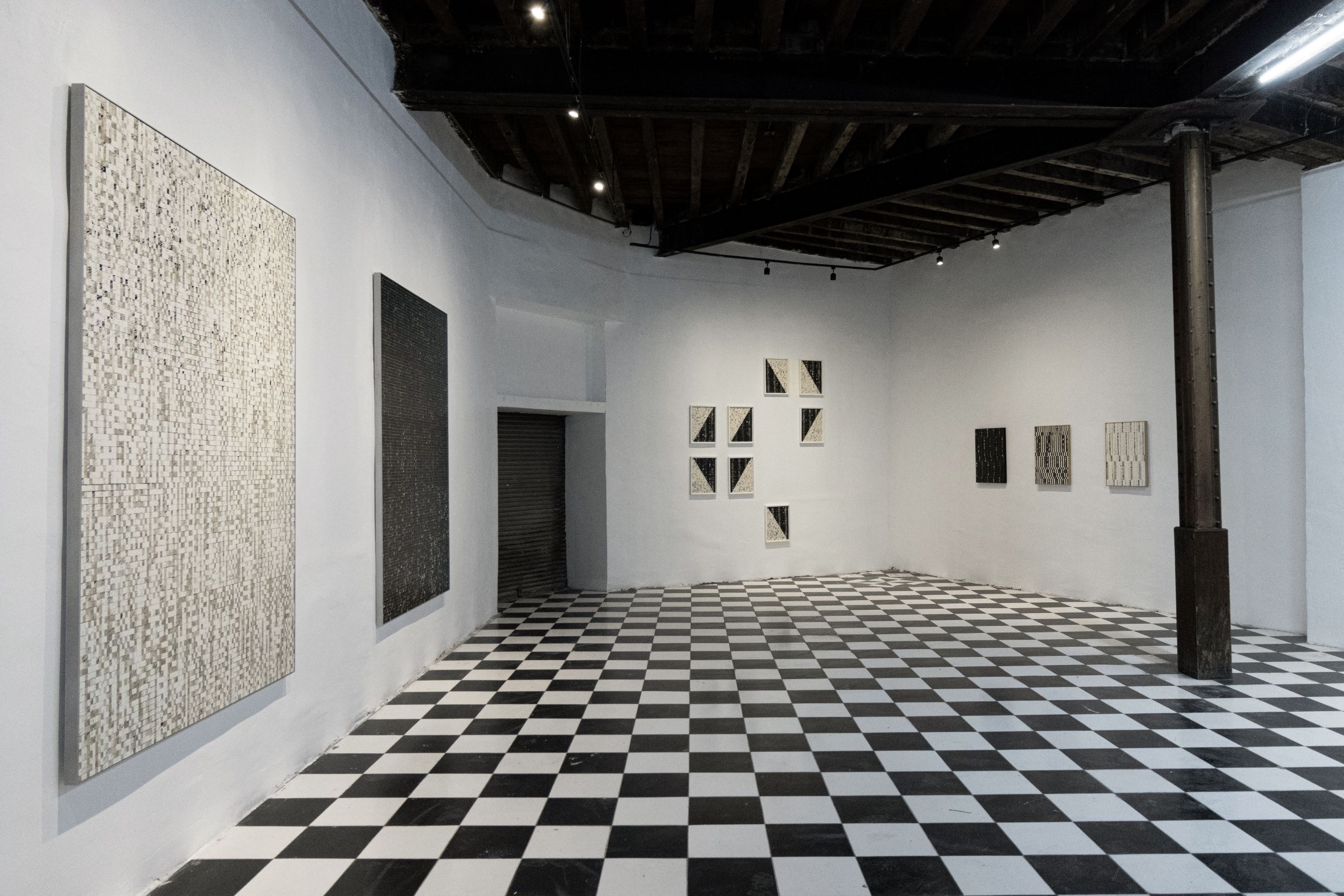
In the meantime, a wave of sounds envelops the place, carrying me through it. These will not be perceived the same once I take a step forward, or a step back. At eight channels, Concepción’s sound piece resonates in the space. What you hear is a composition of cassettes, sound signals reflected on magnetic tape, and something else. Concepción is interested in the analog processes of sound and how they dialogue with digitality. Through this piece, Concepción shares a sonorous cartography of personal memory: sounds that the artist has stored, processes, memories and experimentations synthesized. He tells me that he has a special interest in the low frequencies and how they affect the listener -those sensitivities that are felt inside, in the chest, with which we coincide with others and with space, situating ourselves. It is curious that it is a memory – the past – that makes us vibrate in the present time as we move through space.
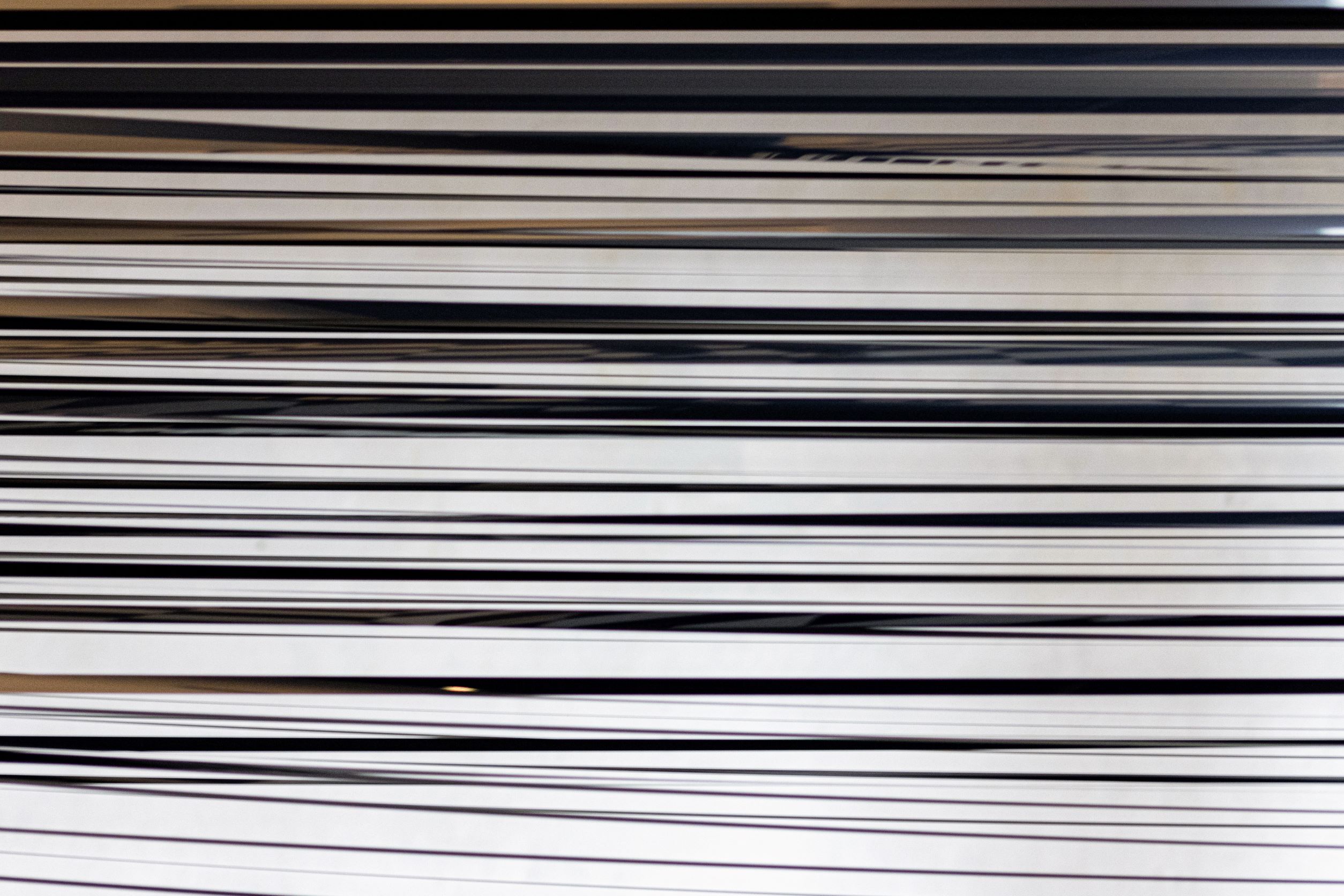
And there, when everything vanishes, Gabriela recalls the powers of fiction within the processes of memory, about the paradox of remembering to forget or forgetting to remember and how memory is transformed into narrative and vice versa. Thus, beyond an approximation to veracity, what happens in this transmission is a search for clarifying the unintelligible, knowing that the only certainty is that there is no such. Thus, Vanessa and Concepción share fictions of sound, representations of the unrepresentable and a game that reconfigures archival materials to think about what sound and meditative processes evoke; to imagine the lost spaces of memory and to corporealize them, making them appear even if only for an instant.
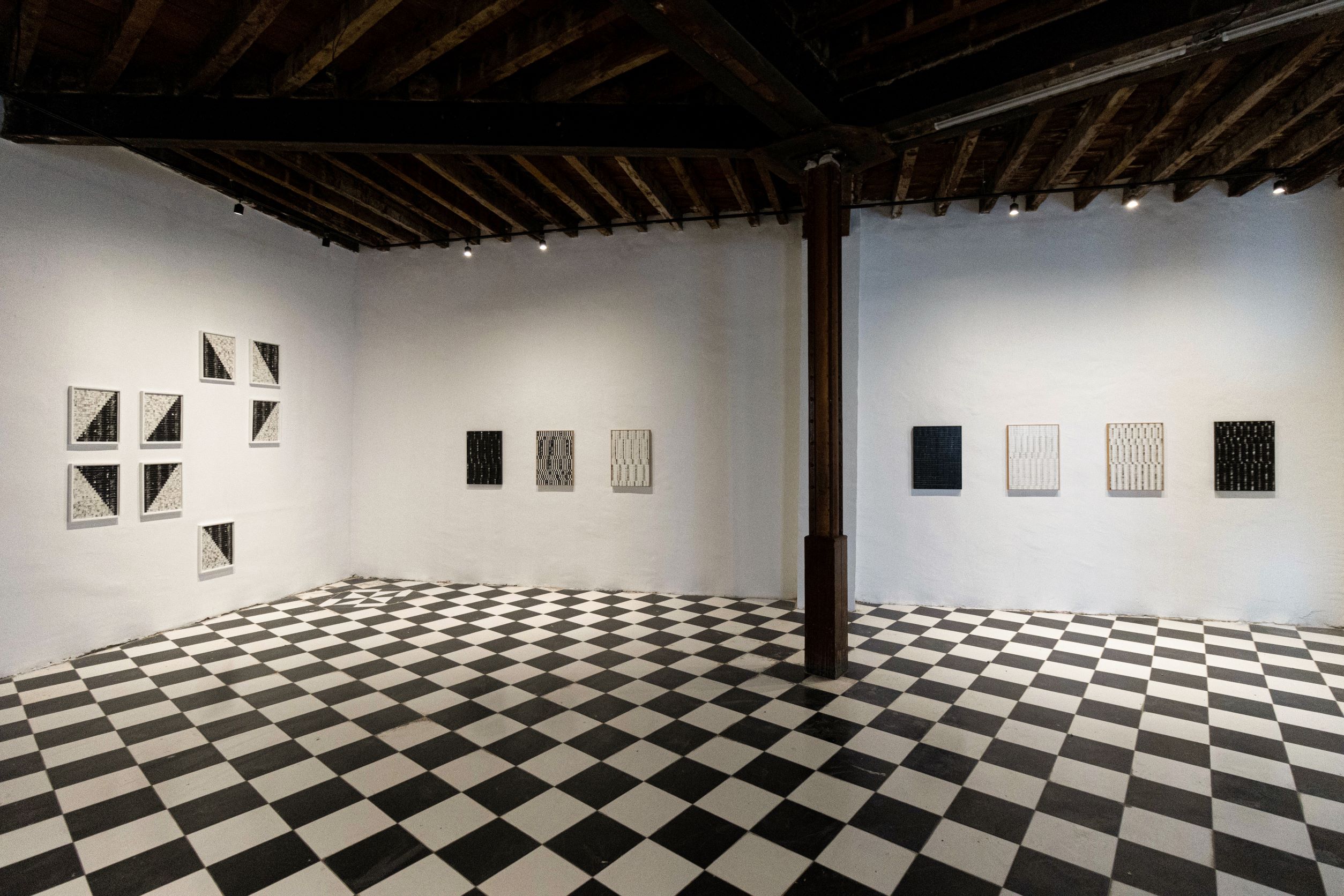
Comments
There are no coments available.